One of the biggest things I ever did to improve my painting was to make a DIY wet palette to use. Not only does it keep your paints from drying out, which alone is a time and money saver, it also keeps the paint wet.
That seems obvious of course. It’s called a wet palette after all, but what it does is allow for smoother layers of paint, and also makes blending really simple. I never thin out my paint for normal use because of the palette; well, unless I’m creating a glaze or something.
So, I’ll show you how to make your own DIY wet palette. It’s simple to do and cheap.
Oh, it’s worth noting that the wet palette is for acrylic paints.
Disclosure: Some of the links below are affiliate links, meaning, at no additional cost to you, I will earn a commission if you click through and make a purchase. The commission earned helps maintain this site.
Making a DIY Wet Palette
Making a DIY wet palette is really easy. You can find tutorials on a completely DIY wet palette where you use household items: kitchen/bath sponges & parchment paper. That’s all well and good, but from experience I prefer to spend a little for a better quality palette. It’s still cheap to do as well.
The problem I have with using parchment paper is that is tears more easily than the acrylic paper I recommend using, and also it’s not as absorbent.
Plus, parchment it’s not reusable. You can get quite a bit of use out of it, and it’s not expensive or anything. However, the thing I like about the acrylic paper is that you can just soak it in hot water to reactivate it as needed. Simple.
Now, there are times when I use parchment paper instead of the acrylic paper. The thing parchment paper is great at is keeping the paints wet for longer. It’s a mixed result though because it also separates the paint. So, I tend to only do this when I’m doing a lot of blending in one session.
The Materials You Need
The wet palette acrylic paper and sponges are by Masterson, a company who has been in the business for a long time.
Now, Masterson does also have a premade wet palette kit. My problem with it is the palette is enormous. The size is what you would use for acrylics if you’re painting on canvas, not for miniatures. It just takes up too much space and has more room in it than you’d ever need.
Of course, that’s an easy fix!
A Sponge Container
So, the first thing I did was to buy a smaller container, as you’ll see here.
Oh, I ordered the above supplies off Amazon, but you may find them at a local art store. There’s a local store in my area that carries both the sponge and acrylic paper. If you’re in the US then you can likely find this at Joann Fabrics, Michaels, A.C. Moore, etc.
Anyway.
I got this container at Jo-Ann Fabrics (art supply chain store in the US) for a few bucks. It’s intended as a photo container.
You can use anything that’s the right size for you, but I suggest you get something that has a lid so you can close it when you’re done painting to help keep things moist. Otherwise, your sponge will dry out, and in turn the acrylic paper.
As I mentioned earlier though, the paper can be reactivated with warm water, so it’s not a big deal, but who wants to wait to do that when you’re all ready to paint?
Oh, old Tupperware would work well here as well. If it’s got a cover you’re good to go. Again, anything works as long as it’s the right size. No need to spend big money here.
How to Make a DIY Wet Palette
Time needed: 2 minutes
Now to put together a few simple supplies to make the wet palette.
- Cut the Sponge to Size
Once you have your container, you just need to cut things to size. The sponge and wet palette paper are huge for this container, so I measure it out and cut the sponge to size while it’s dry – far easier to cut of course.
It’s worth mentioning that doing a few of these ahead of time is worthwhile. If you’re already cutting stuff, you may as well cut a few more to have on hand for when you need a replacement. That’s a lesson I’ve learned the hard way ;) - Cut the Acrylic Paper to Size
I then place the sponge on the acrylic paper as a template, and cut the acrylic paper to the same size.
- Get Everything Wet
Once things are cut, you need to get them wet. The acrylic sheet needs to soak in warm water for 10 minutes to activate.
What I do is place the sheet on the bottom of the container, and put the sponge on top of it. I then put in the hot water. I just use the facet, and then close the lid. The sponge keeps the sheet at the bottom and fully submerged. - Remove Excess Water & Done
Now it’s ready to use.
That’s it! It’s cheap, easy to set up and will greatly improve your painting.
Drying Out
The paper will eventually dry out. How quickly it dries out will depend on how often you paint, and whether you remember to close the lid on your container.
I probably reactivate the paper every few weeks, same with the sponge, during the summer. In the winter I can go months sometimes, but I live in a place where we have cold winters.
When the paper dries out you just soak it in hot water again for 10 minutes, and it’s as good as new. It’s multiple use, same with the sponge. I just follow the same process I used above when I originally activated it. That’s it.
When I remember, I pour some cold water around the sides of the sponge in the container. This helps everything stay wet and prevent drying out. The problem is I never remember.
Just Want to Buy a Wet Palette?
If you don’t want to make your own, then there’s quite a few options available to you. Here’s a quick list of wet palettes I recommend:
- Army Painter Wet Palette
- Formula P3 Wet Palette
- Redgrass Games Wet Palette
- Masterson Sta-Wet Super Pro Palette (this is a bit large)
Those are all quality products from respectable companies. The first 3 are by gaming companies for miniature painters. That Masterson one is great, but as noted, it’s rather large.
Bear in mind, whatever option you go with from that list will require you to buy replacement sheets and sponges over time. That’s a reason I had just decided to make my own, you’re replacing worn out sheets and sponges anyway.
How to Use a Wet Palette
There’s no big secret to using a wet palette. You put paint on the palette from your dropper bottles, or you use a brush to scoop paint from your paint pot and put that on the palette.
Honestly, that’s all there is too it. Once the paint is on your wet palette it will remain wet and workable for hours, sometimes days.
Note that it may thin your paint out a bit too. That’s not a bad thing though since you want to be painting with thin coats anyway.
However, if you’re doing something like edge highlighting where you want the paint more firm, then I’d suggest using a dry palette for that. Learned that one the hard way.
If your paints do start drying out on your, then take a brush with a little water and mix up the paint.
Generally speaking, as long as your acrylic paper (or parchment paper if you went that route) is still wet then your paints should be fine. Also make sure your sponge stays wet and doesn’t dry out on you.
In Closing
Having used the completely home DIY wet palette before and this hybrid (I guess?) that I use, I can say that this works much better for me.
If you’re on a budget then by all means use house sponges and parchment paper. It does work, it’s effective, and it’s cheap; I’m not knocking it. However, if you do have a few dollars then consider this method as well.
In the end though, do whatever works for you. The point is to get yourself using a wet palette either way. It really will change your life. I talk a bit more about the value of a wet palette in my article on painting tips I wish I’d known earlier.
Speaking of simple and affordable changes for better painting, you should check out the Citadel painting handle as well if you haven’t. That thing will just make your life easier.
Also, be sure to see our list of essential painting supplies every hobbyist needs. That list covers the basics as well as items to make things easier.
- Creative Twilight’s Future and My Thoughts (Feedback Welcomed!) - December 4, 2021
- My Top Gift Ideas for Miniature Painters & Hobbyists + Gifts to Avoid - December 2, 2021
- The Year That Was 2020 and Where I’ve Been - January 17, 2021

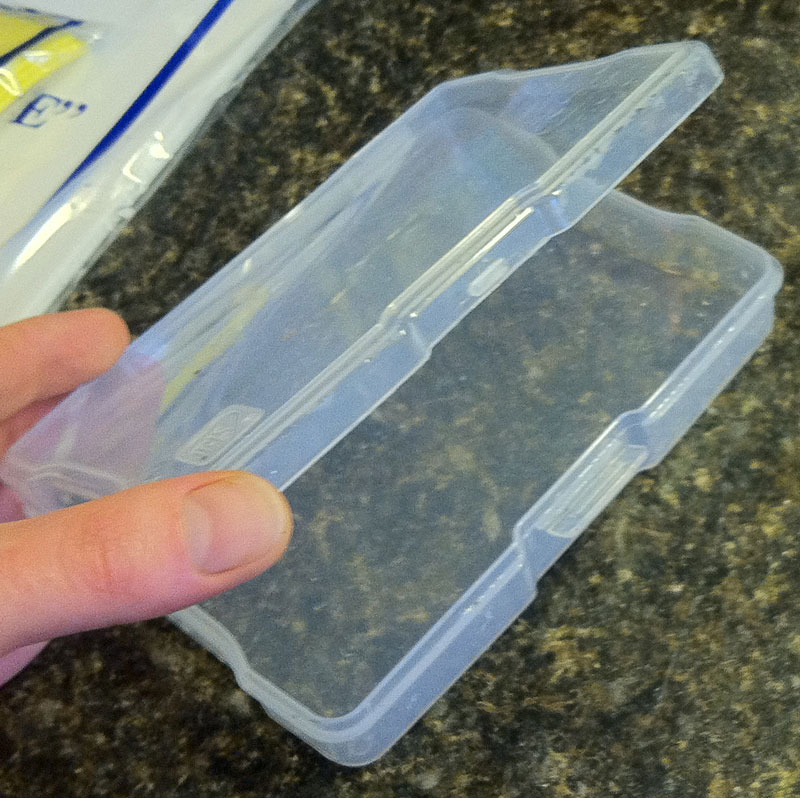
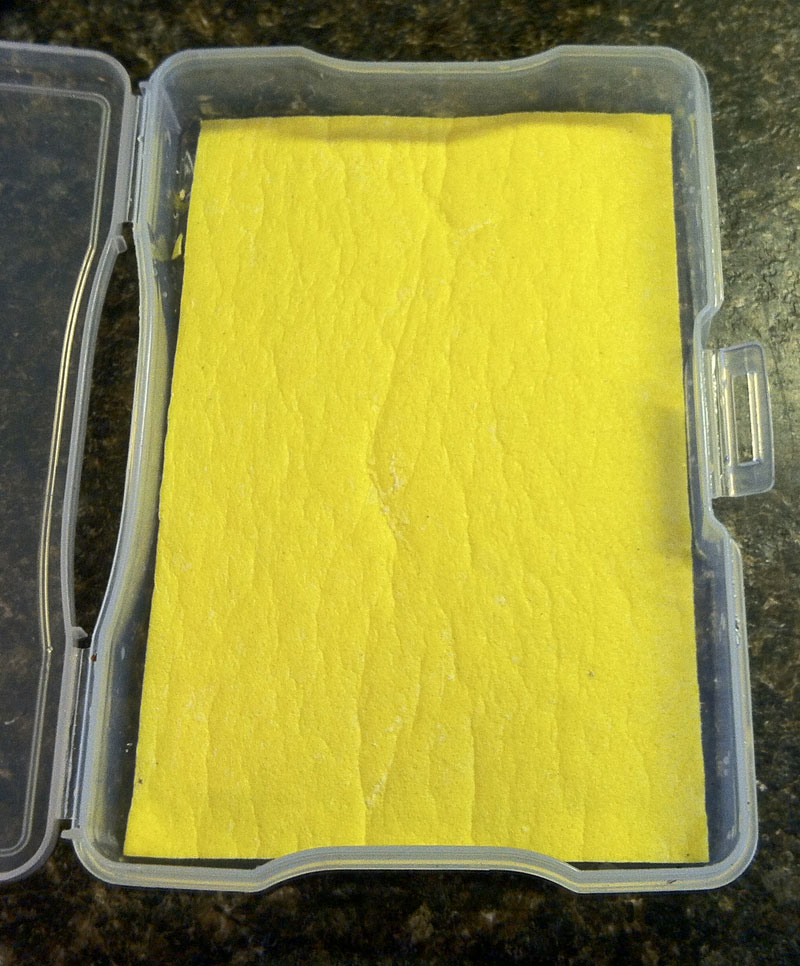
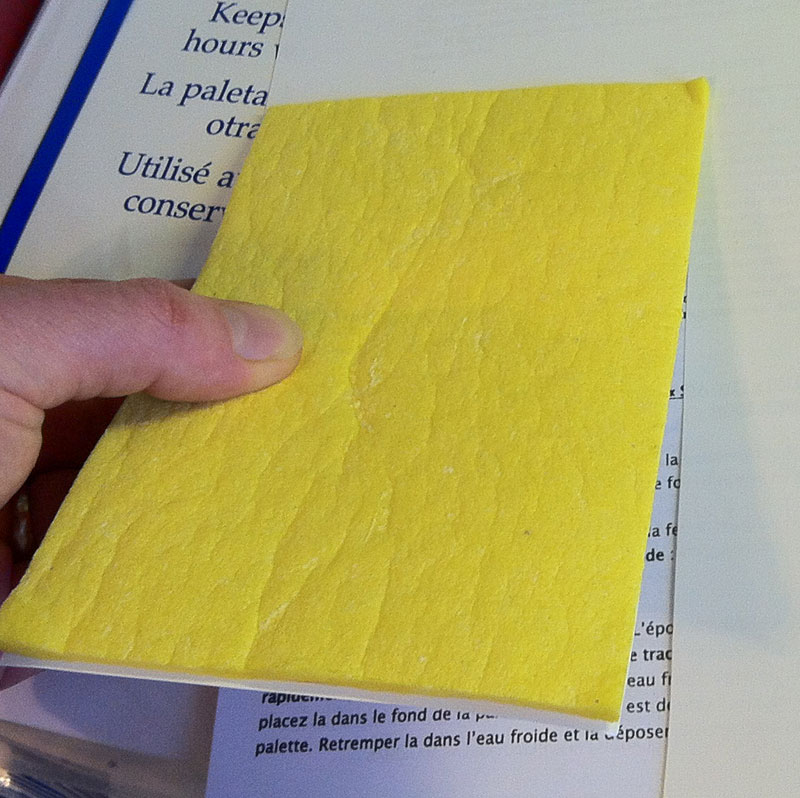
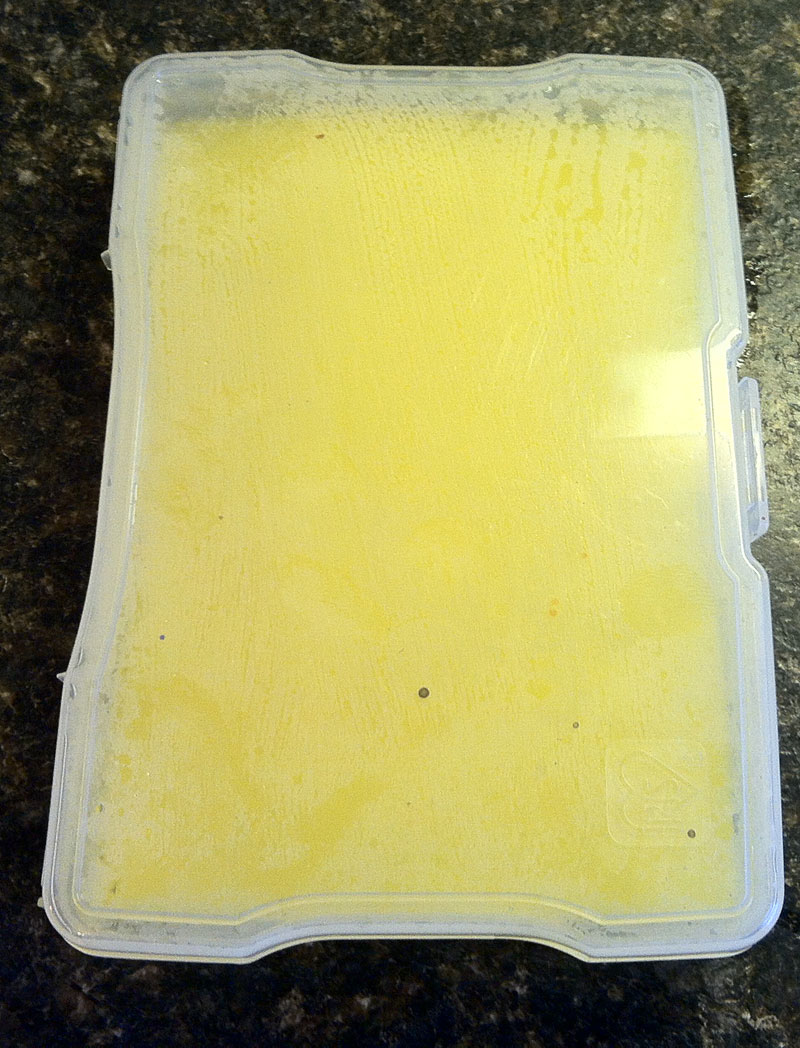
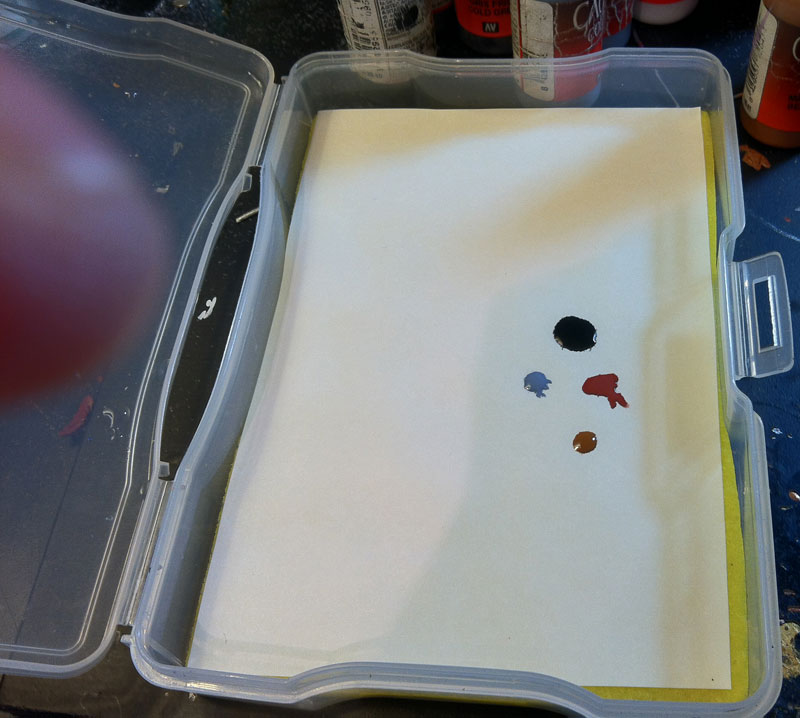
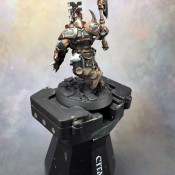


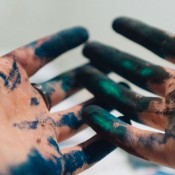
Any issues with mold at all? I’ve read a few times that some people end up with mold growing in the palette on their paint or something.
Nah, never had an issue at all and I’ve been using mine for over a year now.
I’m guessing it was likely environmental to those other people, or they used the cheapo kitchen sponge and parchment method. Maybe something about the organic content of the parchment or something.
Hey, so I realize this post is several years old, but when looking for a good case to make my wet palette, I stumbled upon a product that would only be found on Amazon post-COVID: a mask case. There seem to be a few different varieties, but they all seem to be just the right size for a miniature-painting palette and as of this comment, can be gotten in a four-pack (or more) for pretty cheap. And in several colors, if project color-coding is your thing. Just thought I’d share!
That’s awesome. I’ll definitely check that out. Thanks for sharing!
Hi! In researching wet palette use, I’ve seen a few videos say that the Masterson paper is not meant for the kind of paint that miniatures use — it is suggested it’s too thick and to just use parchment paper instead. Is there anything to be aware of here, or is it just personal preference?
It’s personal preference really. It’s true, this paper isn’t intended for what we use it for with miniature paints, however, what I like about it is that it gives you more control. The thickness means the paints don’t thin out too much and you can control the thinness yourself. With parchment paper I always find that the paints thin out too much for my liking. So, you get the benefits of a wet palette with more control.
Interesting, I like it.
First, a comment: The text in step 4 is a repeat of the text in step 3.
Second, a question: Is the idea of using a wet palette INSTEAD of adding thinners to the acrylic paint, or as well as?
Cheers!
Jeff
Good catch on the step repeat. I’ll fix that.
You use a wet palette and still thin your paints. Even thinned out paints will dry up on you where the wet palette gives you a much longer working time on those paints.